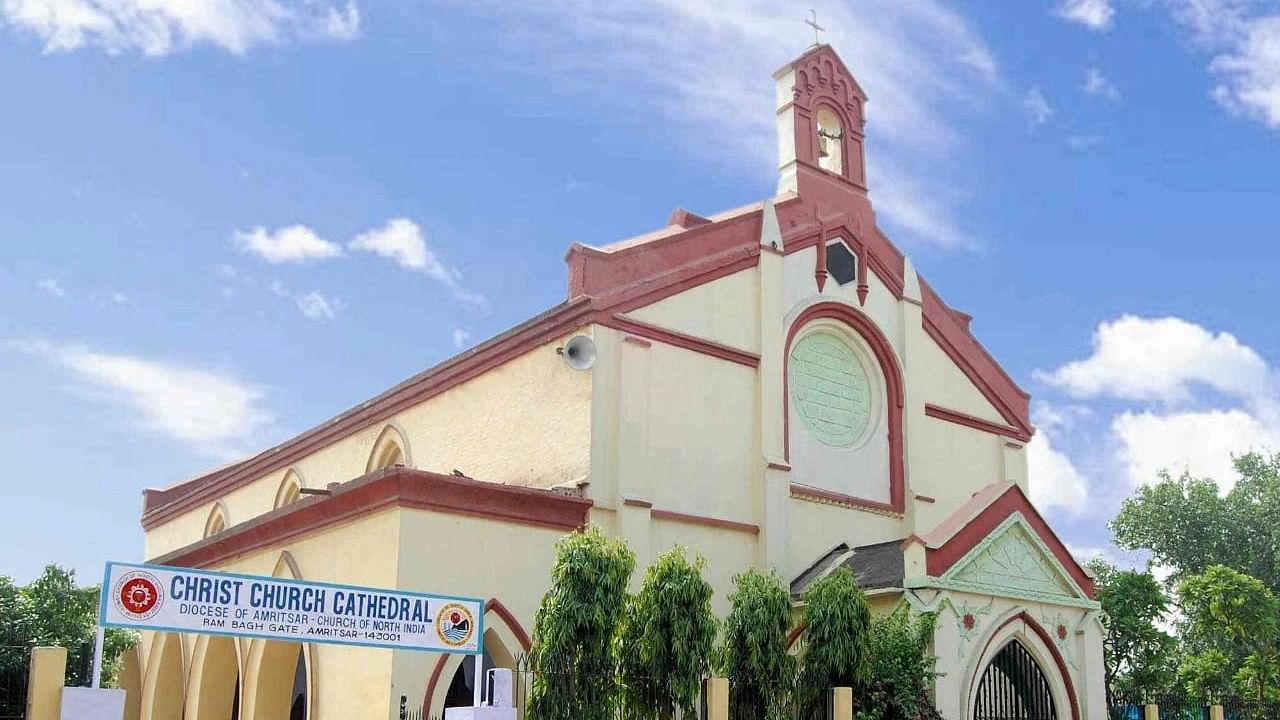
Facade of Christ Church Cathedral in Amritsar.
Credit: Shaheen P Parshad
Among the historical edifices dotting the walled city area of Amritsar, stands Christ Church Cathedral, an important religious landmark by virtue of its being one of the oldest churches of Punjab as well as its association with the upshots of the Jallianwala Bagh massacre, but hitherto ignored despite its historicity.
The story of the massacre remains incomplete without the mention of this church, which was at the heart of the missionary activities of the Church Missionary Society (CMS) and bore the brunt of the wrath of the Indian nationalists in the aftermath of the carnage, but resurrecting and resuming its mission soon after.
While Indians eulogise the martyrdom of Udham Singh and the revenge that he
exacted by assassinating Michael O’Dwyer years later, those protesting the bloodbath got their own back on the British administration of the time by ‘demolishing’ the church with fire in April 1919 itself. The incident has been recorded in the annals of the history of the Church thus: “In April 1919, the Native Church was demolished by fire. The whole building with old records, furniture and fabrics was completely destroyed. It was a great loss to the Christians of Amritsar.” While no written records are available to verify the claims of the incident having taken place on April 13, 1919, oral traditions prevalent among the Christian community of Amritsar state that the church was burnt on the very day of the massacre, which was a Sunday. Though the oral accounts have a lot more to say about the occurrence, the Christian community prefers to stay silent on the issue to avoid triggering controversies.
Erected in 1862 by Edward Palmer, an Englishman, the church was a hub of the missionary activities of the CMS, which started its operations in Punjab in
1852, under the aegis of Rev Robert Clark, at Amritsar, which was made the headquarters of the CMS as the city ‘possessed … rare qualifications to make it a strong missionary centre, being the Holy City of the Sikh people, the seat of authority and worship’. (Source: ‘Robert Clark of the Panjab’). It was enlarged thrice – in 1866, 1875, and 1883.
Originally named Bait-ul-Masih (The House of Christ) by the Indian Christians and the Native Church by the British, this church was mainly meant for the native Christians. Hence, the services here were, and still are, held in ‘Hindustani’. It is situated close to Jallianwala Bagh, a possibility that led to it being burnt, since St Paul’s Church, attended by the British officers, was situated outside the walled city area, and thus, out of the way.
The incident failed to discourage the Christian community of Amritsar, which started rebuilding the church soon after. The work on the construction of the new building was completed in 1921. The new church was given the name of Christ Church. It was renovated in 1948-49 and some important changes were made to it, which not only lent greater historical significance but also added to its beauty.
These included its British architecture, the ‘Good Shepherd’ window made of stained glass, crafted in England and installed atop the site of its main altar, which was replaced by a high altar gifted by Lady Harding to St Thomas Church, Shimla and brought from there to Christ Church after the de-consecration of St Thomas Church in 1948 along with the intricately carved pulpit and several other things. The brick flooring was replaced by a new one, while its façade too was improved in the same year. In recent years, the original altar, which has a Bible verse inscribed on it in Urdu, has been placed again in the most holy place where it used to be, right in front of the high altar.
Now overseen by the Diocese of Amritsar (DoA), Church of North India (CNI), under the aegis of the Most Rev Dr P K Samantharoy, the present Bishop of the DoA, the Christ Church was awarded the status of the Cathedral of the Diocese in 1988 by the Right Reverend Anand Chandu Lal, then Bishop of the DoA, CNI.
Being one of the most significant Churches of the CMS, the Church has witnessed important events since its inception in 1862. These include the baptism of Maulvi Imad-ud-Lahiz by the Rev Robert Clark in April 1866, the ministry of several notable Christian leaders of the twentieth century and the enthronement of the bishops of the DoA, including the present bishop, Bishop Samantharoy, in 1999.